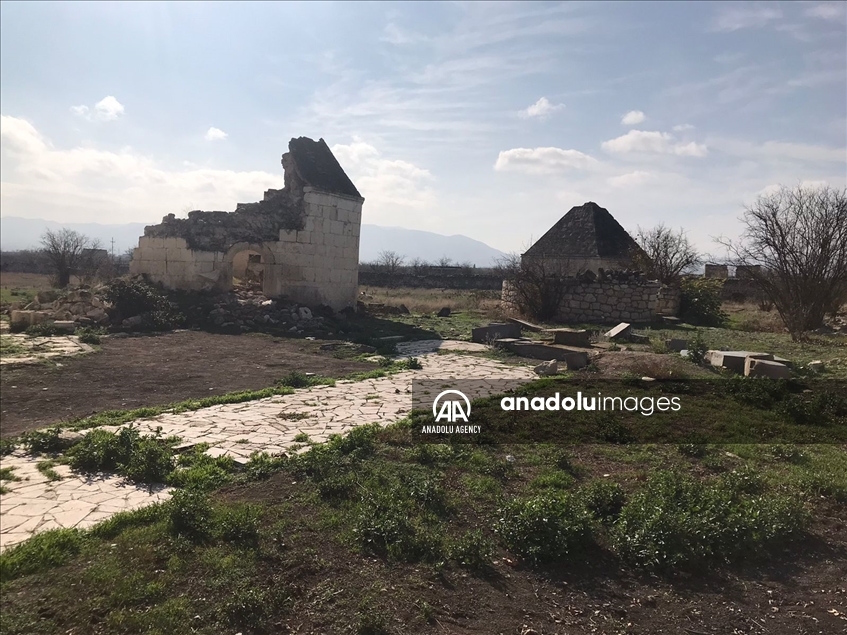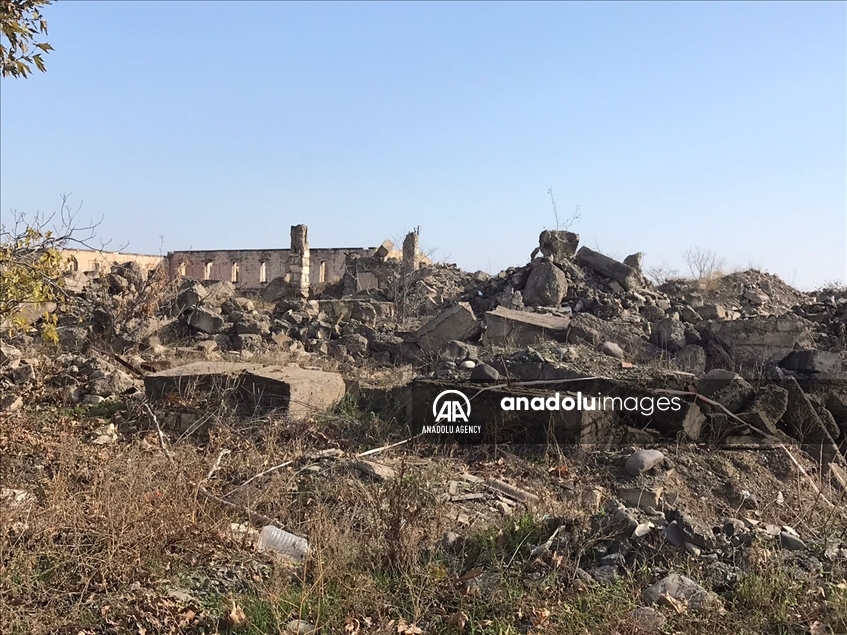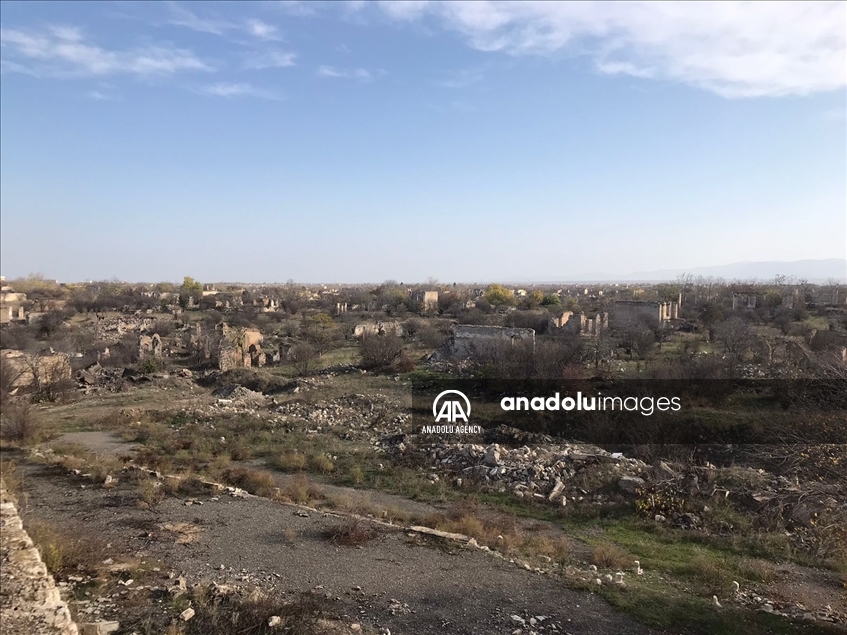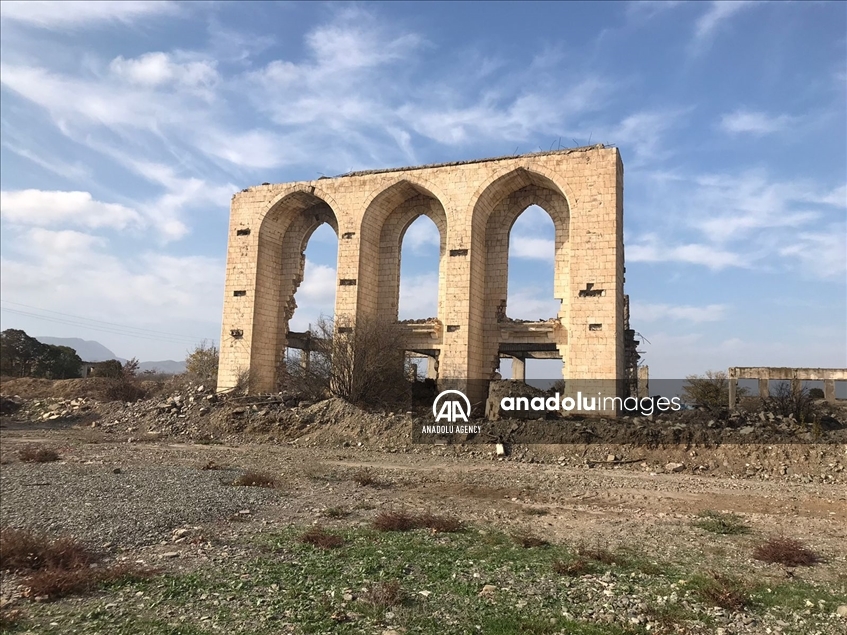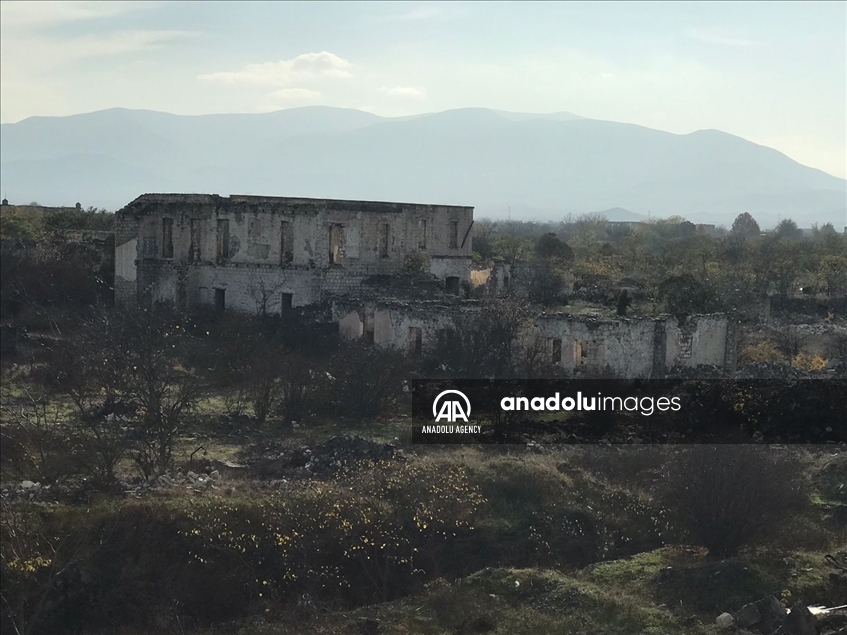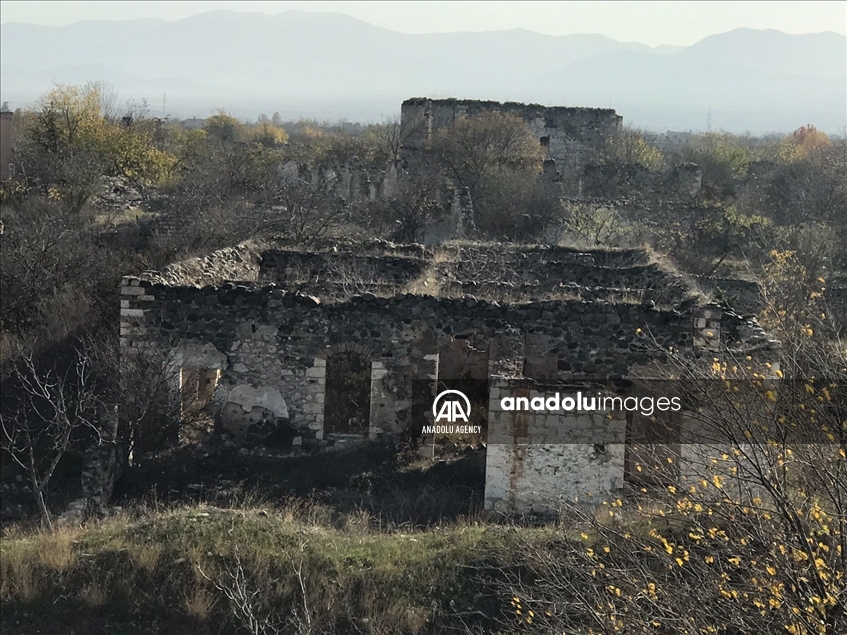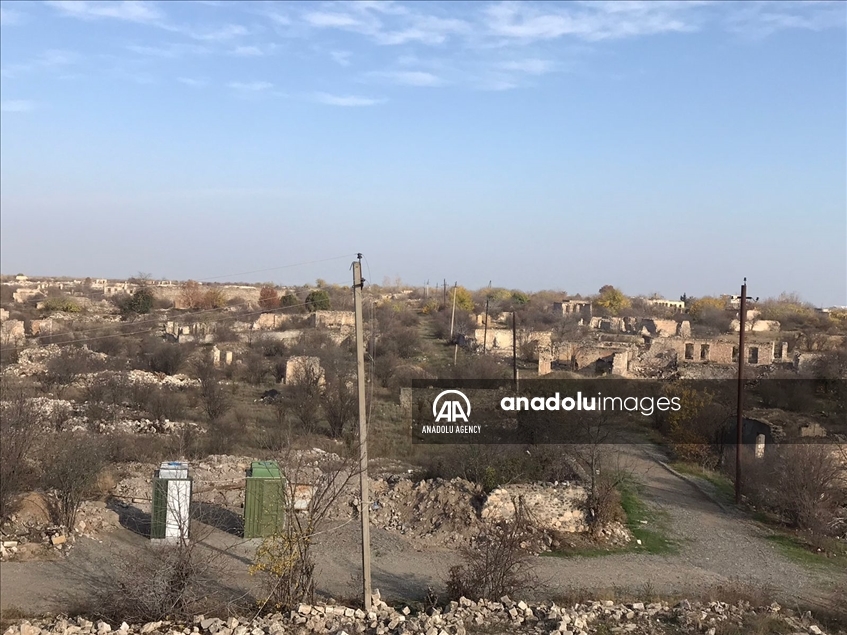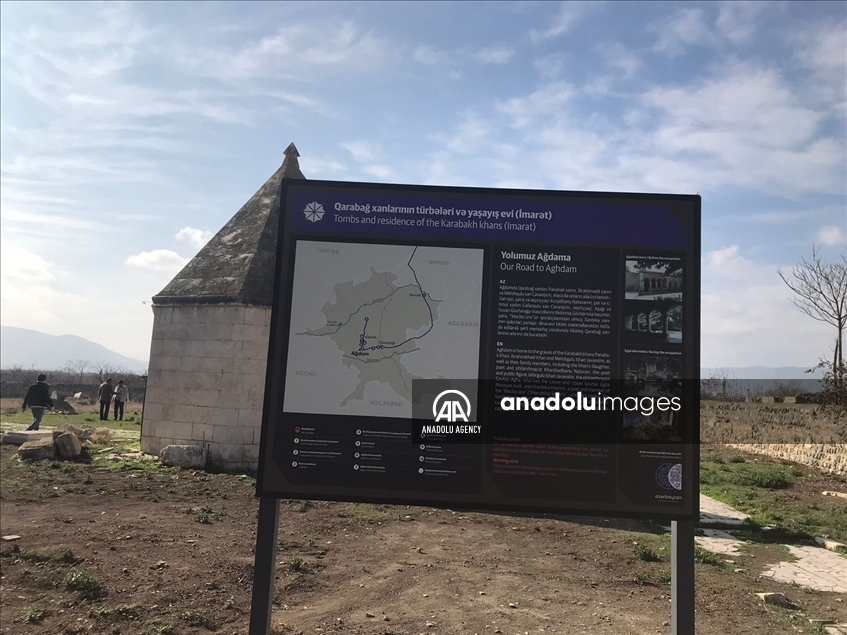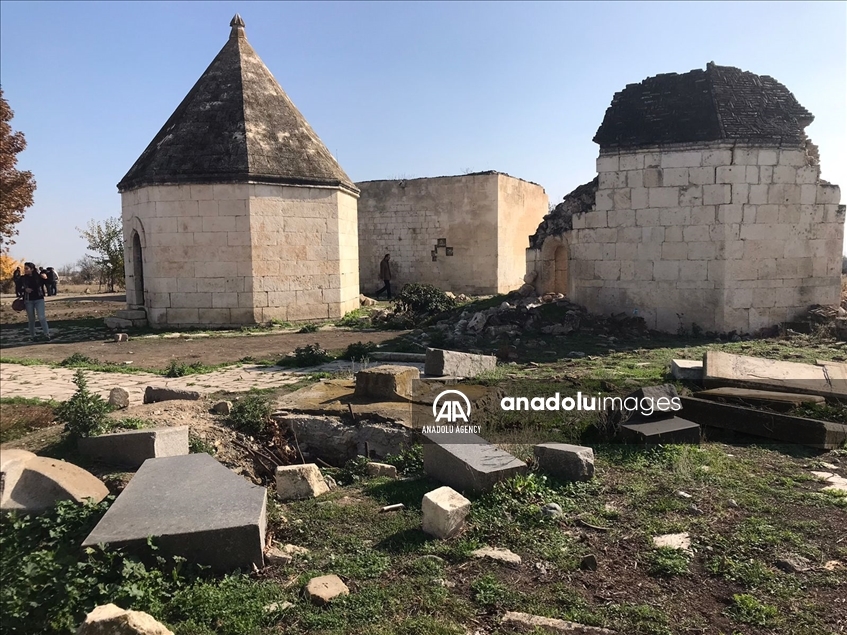Decades-long Armenian occupation wreaked havoc in Karabakh
Agdam, key cultural city in Karabakh, turned into ruins during decades-long occupation of Armenia

AGHDAM, KARABAKH, Azerbaijan
A once famous cultural and business city in the Karabakh region of southwestern Azerbaijan was turned into a ghost town after being completely destroyed during 27 years of Armenian occupation.
Armenian forces occupied 77% of Agdam in 1993, displacing thousands of civilians from the district which was recaptured and liberated by Azerbaijani forces on Nov. 20, 2020.
Thousands of homes, shops and historical and religious centers were destroyed by Armenian forces after they occupied the city in the 1990s and caused billions of dollars’ worth of damage to the civilian infrastructure.
"The city has been completely destroyed. Even historical and religious places were demolished by the occupying forces of Armenia," Umid S. Isazada, the special envoy of the president for Agdam district, told Anadolu Agency.
So far, the exact figures for destroyed homes and shops are not available as a survey is underway, but the numbers are in the thousands, he added.
On Sunday, Anadolu Agency along with a media delegation from Pakistan visited Agdam district, where Isazada briefed them on reconstruction efforts and the destruction carried out by Armenian forces during the occupation.
Before 1993, Agdam was famous and the largest city of the Karabakh region, with thousands of civilians and tens of thousands of hectares of cultivated land. It also had an airport and railway stations, which are now in ruins.
The city was founded in the 18th century and according to local officials was named Agdam (meaning “White Roof”) by the Karabakh ruler Panah Ali Khan, whose tomb and fortress were also located there.

Armenian forces destroy Khan palace, tomb
The palace of Panah Ali Khan was also turned into ruins by Armenian forces while Khan and his family members’ tombs, which were located within the fortress premises, were also destroyed.
"Before the occupation, there was a garden. Everywhere were flowers, museums, mosques. But Armenia has destroyed all those historical and landmark places. Even the graves of Khan and his family members were destroyed," Isazada said.
"This was a paradise left behind by the ruler of Karabakh. But today, it looks like the ‘Hiroshima of the Caucasus,’" he added.
The term "Hiroshima of the Caucasus" is used by Azerbaijani people for Agdam city because Armenia destroyed the entire city and not a single building exists in its original state.
The Agdam Bread Museum, which was founded in 1983, was located in front of Khan's palace. But only the front wall of the museum survived while the remaining structure had been destroyed.
"There were 2,800 exhibits in this museum, but everything was destroyed by the occupation forces, and today you can see only ruins there," the official said, adding the Agdam State Drama Theater that was built in 1955 had also been demolished.
"The destruction of religious, historical and cultural places in Karabakh showed the hatred of Armenia for Muslims," Isazada said.
Billions of dollars’ worth of damage
In March, Azerbaijani President Ilham Aliyev said international organizations and experts would assess the damage caused during the 30 years of Armenian occupation.
Tural Ganjali, a member of parliament from the Karabakh region, said experts are now calculating the destruction.
"Now our experts are calculating the damage that was inflicted to Azerbaijan during these years of occupation. I don't have the exact figures, but we can say that there was probably hundreds of billions of dollars of damage that was inflicted," Ganjali said.
"So the magnitude of the damage is huge," he added.
Earlier, Aliyev said that all buildings in the area had been looted and destroyed, as the goal of the Armenian forces was that Azerbaijanis should never live there again.
"We will live here! We will live forever! We will restore all these buildings -- all of them. Notice what is left of them. Has any international organization raised this issue in 30 years? Has any monitoring been carried out here?" he said.
"They did not leave behind a single safe building," he noted, adding Armenian will be held accountable for this destruction and will answer for it in international courts.

Reconstruction of Agdam
The Azerbaijani government has already approved a master plan for rebuilding the city of Agdam and work is underway on several projects, including the building of homes and apartments for displaced people.
The government has also decided to declare the old city an open-air museum and to build the "Occupation and Victory museum-complex" near the ruined city.
"We will not restore the Drama Theater itself and it will be part of the Occupation and Victory museum-complex under open sky to show the Armenian vandalism to the world and future generations," said Isazada.
According to the plan, the government is building a new city that will be the biggest in Karabakh and the fourth largest in the country.
It will accommodate around 100,000 people.
"The new city will have a downtown, four big parks, tourist places, an industrial zone, a museum complex, an artificial lake and canal, commercial buildings, schools, hospitals, two big mosques, a sports complex, a tramline and wide roads," said the presidential adviser for Agdam, adding the government has also approved the establishment of Karabakh University in Agdam, which will accommodate 10,000 students.
"This will be a new and environmentally friendly city," he added.
Relations between the former Soviet republics of Azerbaijan and Armenia have been tense since 1991, when the Armenian military occupied Nagorno-Karabakh, also known as Upper Karabakh, a territory recognized as part of Azerbaijan, and seven adjacent regions.
Before the second Karabakh War, about 20% of Azerbaijan's territory -- including Nagorno-Karabakh and neighboring regions -- had been under Armenian occupation for nearly three decades.
New clashes erupted on Sept. 27 and the Armenian army continued its attacks on civilian and Azerbaijani forces for 44 days, even violating three humanitarian cease-fire agreements.
On Nov. 10, the two countries signed a Russia-brokered agreement to end the fighting and work toward a comprehensive resolution.


